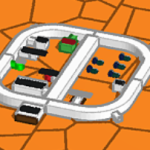Αυτός ο ιστότοπος χρησιμοποιεί cookies, ώστε να μπορούμε να σας προσφέρουμε την καλύτερη δυνατή εμπειρία χρήσης. Οι πληροφορίες των cookies αποθηκεύονται στο πρόγραμμα περιήγησής σας και εκτελούν λειτουργίες όπως η αναγνώρισή σας όταν επιστρέφετε στον ιστότοπό μας και βοηθούν την ομάδα μας να κατανοήσει ποια τμήματα του ιστότοπου θεωρείτε πιο ενδιαφέροντα και χρήσιμα.














